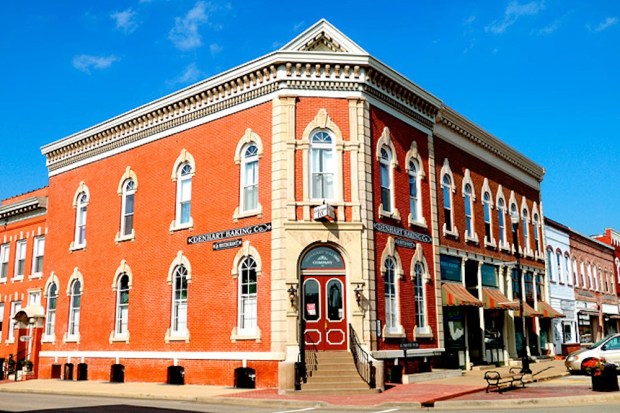Connecting Small Banks To The Mobile Future

Nine years after the introduction of the iPhone to the market — and the subsequent great mobile leap forward — the verdict is pretty much in on mobile banking applications: Consumers like it, verging on loving it, and are eager for more of it.
This is great news — if one happens to be in charge of digital banking for one of the 20 or so largest banks in the world with massive scale, a huge budget to develop internal technical capacity and the ability to leverage advantageous partnerships with cutting-edge FinTech providers. Consumers want the latest mobile capabilities. Big banks have the ability to iterate and deliver on that demand — with all of the bells and whistles that consumers want.
Small and medium-sized institutions face a very different situation. The first is the obvious issue: They lack the massive scale and deep IT pockets of the large banks. Most regional and community banks aren’t in the position to develop cutting-edge mobile banking products in-house.
And that, noted Glen Fossella, EVP of enterprise growth at Urban FT, is actually smaller institutions’ second-biggest problem when it comes to mobile. The first is that mobile banking in its current form isn’t a natural complement to their key value proposition.
“If you’re local and small, you’re much more accessible to your customer, and that is a major part of the draw for community banks — the personal relationship,” Fossella told Karen Webster in a recent interview. “But in the era of mobile banking, as a credit union or small bank, you feel the need to keep up with the Joneses, and so, you roll out a mobile banking app, which likely is a very static, transactional tool. And then, you tell your customer, ‘Now, you don’t have to come into the branch anymore; you can do this from your phone.’ So, as a smaller institution, you just gave up your edge, which is the customer coming into the branch for that very personalized interaction.”
Double-Edged Digital Banking Sword
That is a big risk for smaller institutions who tap into mobile, Fossella noted, which means that even small institutions need to make mobile a tool that extends and continues the dialogue they have with their customers.
Which leads back to that technical capacity problem — customized and personalized tools are what consumers expect in mobile banking. That’s beyond what most FIs can do in-house and often beyond the mobile capability offered through their core banking software provider. What those core vendors are offering, Fossella noted, is “good enough” when compared to earlier mobile standards but not keeping pace with larger banks’ current offerings from a customer experience perspective.
In other words, we’ve come a long, digital way, baby, and what passed for hip and happening three years ago may not knock anyone’s mobile banking socks off today.
But Urban FT noted it doesn’t have to be this way, and like any good innovative startup, it has an idea to solve both the customer engagement and technical capacity problems by offering small banks access to a better and more customizable platform.
The Urban FT Workshop
Consumers used to big banks’ app innovation are accustomed to logging into a single app to do all of their mobile banking functions — a couple of taps and swipes and bills can be paid, funds can be moved and checks can be deposited. If tapping out a long, complex password was holding one back from mobile banking, a Touch ID phone will solve that problem at most big global banking players.
Community banks just aren’t offering that, according to Fossella. About 14,000 community banks nationwide still offer nothing at all. Their progress into the mobile sphere can best be described, so far, by the word “pass.” The other half offers something very out-of-date. The necessity for multiple app downloads rules, and biometric tie-ins are basically nonexistent.
“When we talk with banks, they are relying on whatever one of the big four core providers offers in most cases,” Fossella noted. “We hear from some that they have one app for mobile banking, another one for mobile deposit and a third for mobile enrollment. This is first-generation stuff.”
And it’s where Urban FT steps in with its Workshop. Essentially, Fossella explained to Webster, the software works by allowing users to create, deploy and manage mobile applications on the Urban FT platform by flipping a series of switches on a digital control panel that allows them to tailor the app to the needs of their consumers.
Designed with the non-technical user in mind, choices of app features and services can be turned on and off at will depending on need. Those features can be combined with branding elements. Features and branding can also be broken down across different apps for individual customer groups or segments in ways that allow the bank and its customers to communicate more seamlessly and socially with one another.
“It’s not quite personalized yet down to the individual user, but the Workshop enables banks to launch multiple apps targeting segments like millennials, small business or mass affluent, and that makes it much easier to build brand loyalty around and also attract different consumer segments to drive deeper relationships with the banking customer. The Workshop lets banks customize and construct their digital presence to support a wider variety of digital interactions and the tools to then perfect and direct those digital touchpoints.”
Why Now — And What’s Next
So, why now, Webster asked, are small banks clamoring for a new tool when it was obvious that they’ve been out-of-date for a long time? That, Fossella noted, is the nature of the small and mid-sized banking space; core providers have found that it is better to let small and hyper-focused players, like Urban FT, create new solutions, then pick them up and develop them to scale.
“No matter how big they are, there are only so many things they can focus on. Someone smaller and more focused will always jump in and innovate,” Fossella said. “If you look at the big four core providers, they are really good at acquiring smaller banking tech and FinTech companies. They are better at acquiring and integrating companies than any other industry I’ve worked in. It is a core competency they’ve developed because they’ve had to, due to how fast the ecosystem evolves. However, it can lead to lagging the market from an innovation standpoint.”
And that lag potential is also a huge motivator for Urban FT since it has to make sure that the apps and services it enables clients to customize for themselves are future-proofed enough that they will be relevant for years to come.
Fossella said they’re up for the challenge since the user-facing front end of its digital banking platform is built over a technical architecture that is largely plug-and-play. As additional capabilities come into vogue and consumers express preference for them — be it in authentication, payments or lending, for example — the platform enables rapid integration with best-of-breed third-party services. Moreover, Fossella told Webster, for all this flexibility and changeability, the banks still have the control provided by the Workshop, and consumers just see new or upgraded features within the same UI.
Fossella said the Workshop is designed nicely to “play with others,” meaning it allows banks to also create and manage apps branded for their commercial clients — to use clients’ brand affinity to push the relevance and connectedness of the app.
As for what’s next, like most startups, the goal is scale and adding functionality to the platform. In the not-to-distant future, Fossella noted that Urban FT will add support for lending products. The company is also looking to add Touch ID support for its banking clients by early 2017 — likely sometime in Q2. It’s also been getting a lot of international interest for the product and is eager to capitalize on that.
The big takeaway is that providing greater engagement, along with the latest features in mobile, is a necessity for those who want stay on the playing field. According to Urban FT, that point isn’t always obvious to financial institutions.
“Modern consumers are sophisticated, and engagement and personalization are what they want” and asking banking customers to forego these wants won’t be tenable much longer.
